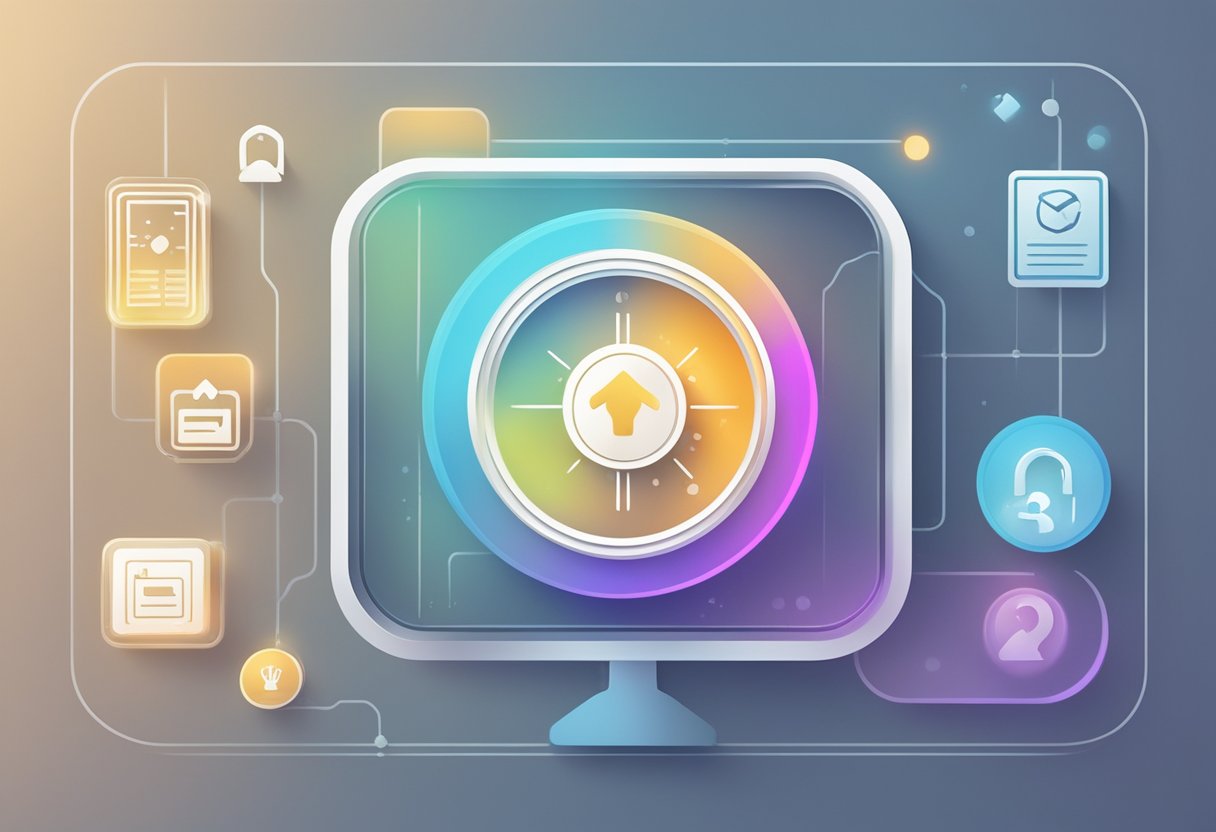React Native is a popular open-source framework for building mobile applications. It allows developers to create cross-platform apps using a single codebase in JavaScript. One of the key components of any mobile app is the button, which is used to trigger an action or navigate to a different screen. In this article, we will explore the React Native Button Icon component, which provides an easy way to add icons to buttons in your app.

The Button Icon component is a simple and intuitive way to add icons to your buttons in React Native. It allows you to choose from a variety of built-in icons or use your own custom icon. The component also provides options to customize the icon’s size, color, and position within the button. With the Button Icon component, you can create visually appealing buttons that enhance the user experience of your app.
In addition to providing a more visually appealing interface, the Button Icon component can also improve the accessibility of your app. By using icons in addition to text labels, users with visual impairments or language barriers can better understand the function of the button. This can help to make your app more inclusive and user-friendly for a wider audience.
Índice De Conteúdo
Getting Started with React Native Buttons
Installation
To get started with React Native Buttons, you need to have Node.js installed on your machine. Once you have Node.js installed, you can install React Native by running the following command in your terminal:
npm install -g react-native-cli
Next, you need to create a new React Native project by running the following command:
react-native init MyProject
After creating the project, you can install the React Native Buttons library by running the following command:
npm install react-native-elements
Basic Setup
To use the React Native Buttons library in your project, you need to import the Button component from the react-native-elements package. You can then use the Button component in your JSX code like this:
import React from 'react';
import { Button } from 'react-native-elements';
const MyButton = () => {
return (
<Button
title="My Button"
icon={{ name: 'arrow-right', type: 'font-awesome' }}
onPress={() => console.log('Button pressed')}
/>
);
};
export default MyButton;
In the above code, the Button component is imported from the react-native-elements package and used in the MyButton component. The Button component takes several props, including the title, icon, and onPress props. The title prop is used to specify the text that appears on the button, while the icon prop is used to specify the icon that appears next to the text. The onPress prop is used to specify the function that is called when the button is pressed.
By following these steps, you can easily get started with React Native Buttons and create beautiful and functional buttons for your React Native applications.
Adding Icons to Buttons
React Native Button component allows developers to add icons to buttons. This provides a more interactive and visually appealing user interface. There are two ways to add icons to buttons: using vector icons and custom icon components.
Using Vector Icons
React Native provides a library of vector icons that can be used in buttons. These icons are scalable and can be customized according to the developer’s needs. To use vector icons, the developer needs to first install the react-native-vector-icons package.
After installing the package, the developer can import the desired icon from the library and add it to the Button component as follows:
import Icon from 'react-native-vector-icons/FontAwesome';
<Button
icon={<Icon name="rocket" size={30} color="#900" />}
title="Button with icon"
/>
In the example above, the FontAwesome icon library is imported, and the rocket icon is added to the Button component. The size and color properties can be customized to fit the developer’s needs.
Custom Icon Components
Developers can also create their own custom icon components and add them to the Button component. This allows for more flexibility and customization of the icon. To add a custom icon component, the developer needs to create a new component that renders the desired icon.
For example, the developer can create a CustomIcon component that renders an image of a rocket as follows:
import { Image } from 'react-native';
const CustomIcon = () => {
return (
<Image
source={require('./rocket.png')}
style={{ width: 30, height: 30 }}
/>
);
};
The CustomIcon component can then be added to the Button component as follows:
<Button
icon={<CustomIcon />}
title="Button with custom icon"
/>
In the example above, the CustomIcon component is added to the Button component. The width and height properties can be customized to fit the developer’s needs.
In conclusion, adding icons to buttons in React Native is a simple and effective way to enhance the user interface. Developers can use vector icons or create their own custom icon components to add more flexibility and customization to their buttons.
Styling Button Icons
React Native provides developers with a variety of options to style button icons. Developers can customize the size, color, and alignment of the button icons to suit their needs. In this section, we will explore some of the ways that developers can style button icons.
Icon Size and Color
Developers can adjust the size and color of button icons to make them stand out or blend in with the overall design of the app. To change the size of a button icon, developers can use the iconSize prop. This prop accepts a number that represents the size of the icon in pixels. For example, iconSize={30} will set the size of the icon to 30 pixels.
To change the color of a button icon, developers can use the iconColor prop. This prop accepts a string that represents the color of the icon. Developers can use any valid CSS color value, such as red, #FF0000, or rgb(255, 0, 0). For example, iconColor='red' will set the color of the icon to red.
Button and Icon Alignment
Developers can also adjust the alignment of button icons within the button itself. By default, button icons are centered within the button. However, developers can use the iconRight prop to align the icon to the right of the button. This prop accepts a boolean value. For example, iconRight={true} will align the icon to the right of the button.
In addition, developers can use the iconContainerStyle prop to further customize the alignment of the button icon. This prop accepts a style object that can be used to specify the position of the icon within the button. For example, iconContainerStyle={{marginLeft: 10}} will move the icon 10 pixels to the right of the center of the button.
Overall, styling button icons in React Native is a simple process that can greatly enhance the user experience of an app. By adjusting the size, color, and alignment of button icons, developers can create buttons that are both functional and visually appealing.
Handling Interactions
OnPress Event
React Native Button Icon component provides an onPress event that allows developers to define a function that will be executed when the button is pressed. This event can be used to perform various actions, such as navigating to another screen, updating the state of the application, or sending a request to the server.
To use the onPress event, developers need to pass a function as a prop to the Button Icon component. This function will be called when the user taps the button. For example, the following code snippet shows how to define an onPress event that navigates to another screen:
<ButtonIcon
onPress={() => navigation.navigate('AnotherScreen')}
icon={<Icon name="arrow-right" size={20} color="white" />}
/>
Button States
React Native Button Icon component provides three different states: enabled, disabled, and loading. The enabled state is the default state of the button, and it allows users to interact with it. The disabled state, on the other hand, prevents users from interacting with the button. The loading state is used to indicate that the button is performing an action, such as sending a request to the server.
Developers can set the state of the button by passing the appropriate prop to the Button Icon component. For example, the following code snippet shows how to define a disabled button:
<ButtonIcon
disabled={true}
icon={<Icon name="arrow-right" size={20} color="white" />}
/>
In addition to the enabled, disabled, and loading states, developers can also customize the appearance of the button by passing props such as color, size, and style. These props allow developers to create buttons that match the design of their application.
Overall, React Native Button Icon component provides a simple and flexible way to handle interactions in mobile applications. By using the onPress event and the different button states, developers can create buttons that are both functional and visually appealing.
Performance Considerations

When using the Button component in React Native, there are a few performance considerations to keep in mind.
Firstly, it is important to note that using icons with Button can impact the performance of your application. This is because rendering icons requires additional processing power and memory. Therefore, it is recommended to use icons sparingly and only when necessary.
Another consideration is the size and complexity of the icon. Larger and more complex icons require more processing power and memory, which can result in slower performance. It is important to balance the visual appeal of the icon with its impact on performance.
It is also important to consider the number of buttons with icons on a single screen. Having too many buttons with icons can cause performance issues, especially on older devices. It is recommended to limit the number of buttons with icons on a single screen to improve performance.
In addition, it is recommended to use pre-built icons instead of creating custom icons. Pre-built icons are optimized for performance and can help improve the overall performance of your application.
Overall, by keeping these performance considerations in mind, developers can create high-performing applications that provide a great user experience.

